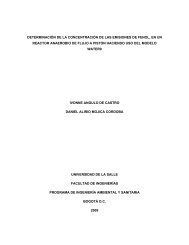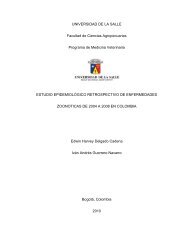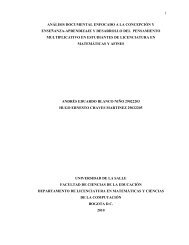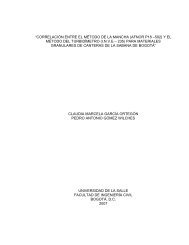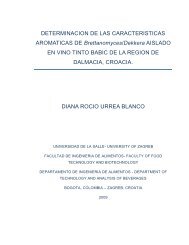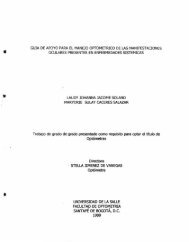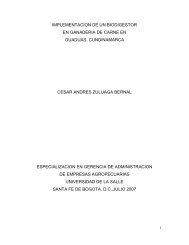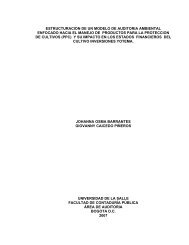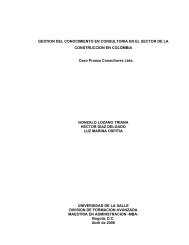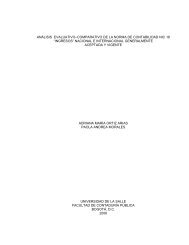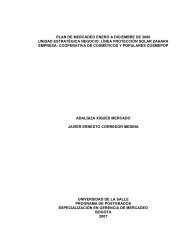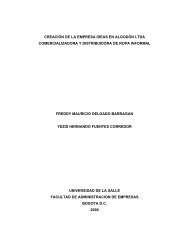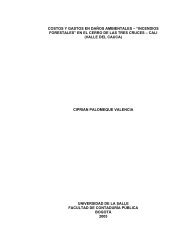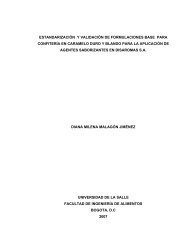T13.08 L846e.pdf - Universidad de La Salle
T13.08 L846e.pdf - Universidad de La Salle
T13.08 L846e.pdf - Universidad de La Salle
Create successful ePaper yourself
Turn your PDF publications into a flip-book with our unique Google optimized e-Paper software.
ABSTRACT<br />
The present study was done in or<strong>de</strong>r to analyze the effect of efficient<br />
microorganisms EM as a supplement in the feeding of dairy cows in the tropics.<br />
This trial was ma<strong>de</strong> in two steps, first in laboratory the mini-silos and the<br />
experimental phase. The mini-silos methodology was used to analyze the<br />
compositional changes in the silage regarding cru<strong>de</strong> protein, soluble protein, not<br />
protein nitrogen NPN, acid <strong>de</strong>tergent fiber ADF and neutral <strong>de</strong>tergent fiber NDF.<br />
For the experimental phase nine guzolando cows were used, un<strong>de</strong>r a semiintensive<br />
grassing system with Cynodon nlemfluensis, and were divi<strong>de</strong>d randomly<br />
in three treatments in which two basic things were analyzed in milk production:<br />
volume and compositional quality. Each treatment arranged three repetitions which<br />
had different ages and number of calvings. The treatments were: T1:<br />
supplemented with commercial feed in pellet, T2: supplemented with corn silage<br />
and T3: supplemented with corn silage + EM. The results were analyzed un<strong>de</strong>r a<br />
random blocks <strong>de</strong>sign. Concerning milk production, the treatment that had the<br />
highest value was the one supplemented with commercial feed in pellet (14.907<br />
L/day), while over the other two treatments there weren’t significant differences,<br />
with a production of 8.934 L/d the treatment with silage and 8.771 L/d the one with<br />
silage + EM. Concerning the milk composition, protein was the value that less<br />
varied according to the treatment and didn´t presented significant differences. Fat<br />
was the component that varied the most, presenting significant differences, the<br />
treatment with the higher value was the one with commercial feed with 3.549%,<br />
followed by the one with silage 3.424%, and lowest was the one with silage and<br />
EM with 3.251%. Regarding <strong>de</strong>nsity which also presented significant differences,<br />
the treatment with silage and EM was the one that produced the <strong>de</strong>nsest milk<br />
(1034.083), followed by the one of silage (1032.880) and at last the one with<br />
concentrated feed (1030.961). According to the number of calvings there weren’t<br />
significant differences in any of the variables. This study lasted 30 days and was<br />
done in the first 100 days of lactation of the cows. Concluding that even when<br />
microorganisms seem to improve the compositional quality of the corn silage, they<br />
don´t make any better milk production neither milk compositional quality.<br />
Key words: corn silage, efficient microorganisms, micro silage.



